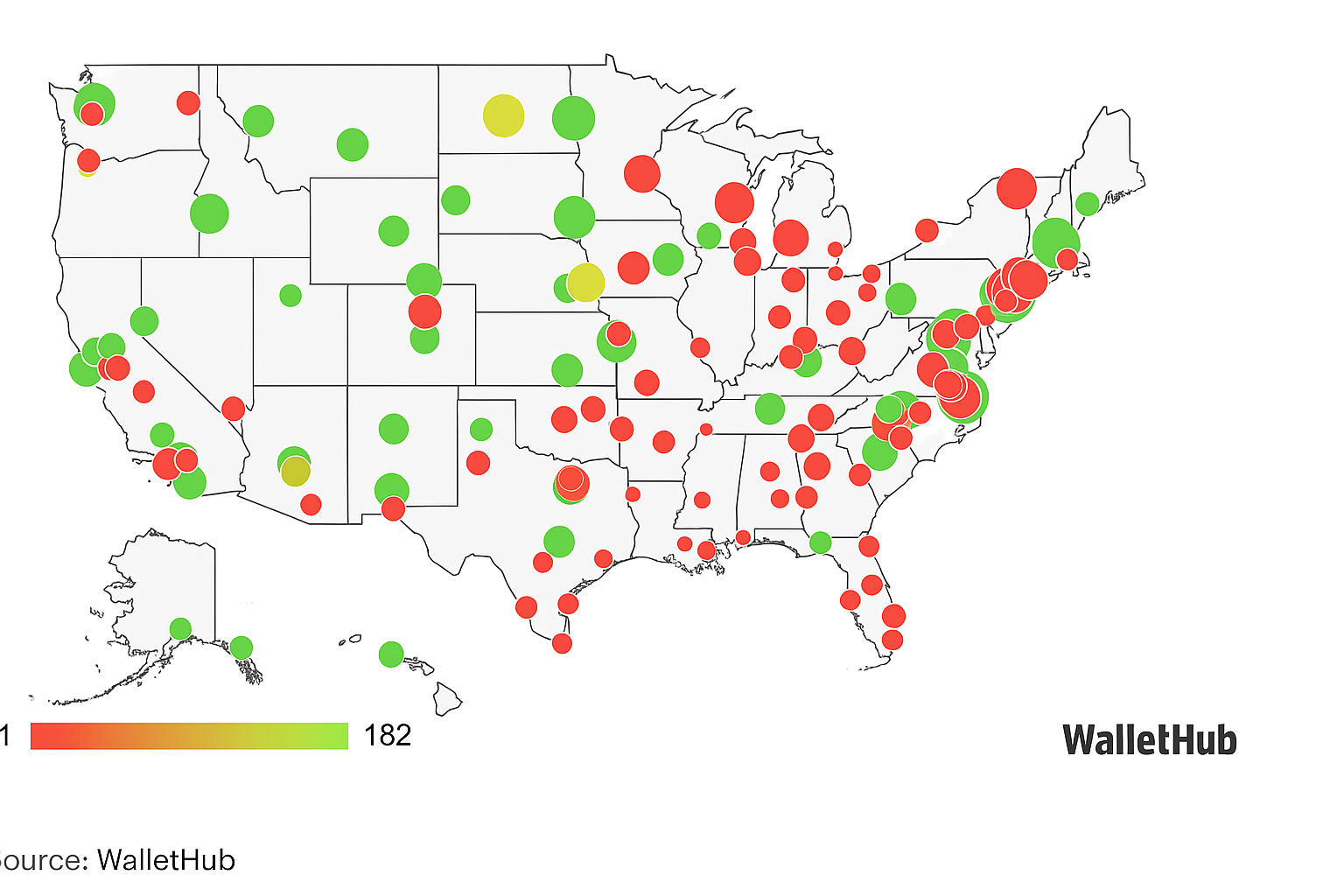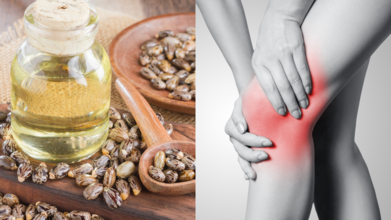- Health Conditions A-Z
- Health & Wellness
- Nutrition
- Fitness
- Health News
- Ayurveda
- Videos
- Medicine A-Z
- Parenting
- Web Stories
Doctor Reveals 4 Lifestyle Hacks That Lower Cholesterol Better Than Statins

You go for a routine check-up, and your doctor warns about high cholesterol. The usual solution? Statins. But what if lifestyle changes could work even better? Science-backed habits—like eating right, staying active, and managing stress—can naturally lower bad cholesterol, improving heart health without solely relying on medication.
High cholesterol is now a significant health issue, causing an elevated risk of heart disease, stroke, and other cardiovascular diseases. Although statins, or cholesterol-lowering drugs, are widely prescribed, they might not be the ideal or sole answer.
LDL cholesterol makes the largest single contribution to atherosclerosis, where arteries constrict and thicken with a buildup of plaques. Atherosclerosis risk factors include an increased risk for heart attacks and strokes, and for decreased blood flow to crucial organs. In most cases of high cholesterol, there is an underlying genetic condition. However, unhealthy eating patterns, physical inactivity, cigarette smoking, as well as coexisting medical diseases like diabetes and hypothyroidism, can contribute to elevated levels of LDL cholesterol. According to Dr. Kapil Kochhar, Head of General & Minimally Invasive Surgery, four potent lifestyle changes can reduce 'bad' cholesterol (LDL) levels better than medication alone.
The better news? When adopted early and consistently, these four lifestyle changes can be more effective at reducing cholesterol levels than statins, without the side effects.
1. The Power of a Heart-Healthy Diet
Diet is the most important aspect in lowering cholesterol levels. Dr. Kochhar underlines that saturated and trans fat can be substituted with heart-friendly fats to a great extent and this will directly affect the levels of LDL.
Fiber foods like oats, lentils, beans, and fruits serve as natural cholesterol absorbers and enable the body to get rid of excess LDL. Soluble fiber traps cholesterol in the intestine and prevents it from being absorbed into the blood.
Healthy fats in nuts, seeds, avocados, and olive oil should substitute saturated fats from fried and processed foods. Omega-3 fatty acids, which are found in fatty fish such as salmon and mackerel, are very effective in lowering LDL and increasing 'good' HDL cholesterol.
Dr. Kochhar also cautions against too much consumption of refined sugars and carbohydrates, which can lead to increased triglyceride levels, another heart disease risk factor. Instead, he recommends whole grains, leafy greens, and lean proteins as the best sources to create a balanced, cholesterol-friendly diet.
2. Key to Balancing Cholesterol is Daily Exercise
Regular physical activity is an important part of heart health and cholesterol control. Exercise not only reduces levels of LDL cholesterol, which helps to clear excess cholesterol from the blood.
Dr. Kochhar suggests a minimum of 30 minutes of moderate exercise, including brisk walking, cycling, swimming, or strength training, on most days of the week. Research has demonstrated that aerobic exercise enhances cholesterol profiles by increasing the body's capacity to metabolize fats.
Also, physical activity promotes weight control, an important consideration in patients with high cholesterol. The most common reason for increased levels of LDL is obesity, and weight loss is associated with favorable changes in the lipid profile. Even small regular efforts in physical activity are followed by long-term benefits.
3. Stress Management for a Better Heart
Stress has an immense effect on cholesterol levels by usually resulting in unhealthy ways of coping, for example, smoking, overeating, or taking too much alcohol. Cortisol, which is the body's major stress hormone, has also been associated with elevated LDL cholesterol and triglyceride levels.
Dr. Kochhar points to stress management methods as a crucial aspect of reducing cholesterol naturally. Doing yoga, meditation, deep breathing, and sleeping well can assist in balancing cortisol levels and averting spikes in cholesterol.
In addition, partaking in soothing activities—reading, being in nature, or being mindful—are also beneficial to heart health. Research indicates that individuals who can effectively manage stress have improved cholesterol and cardiovascular functioning.
4. Quit Smoking and Reducing Alcohol Intake
Smoking and heavy drinking can greatly raise cholesterol levels and overall cardiovascular risk.
Dr. Kochhar says that smoking injures blood vessels and decreases HDL cholesterol, allowing LDL cholesterol to more readily build up in arteries. Smoking cessation can produce nearly instant changes in cholesterol levels and overall cardiac health.
Equally, heavy alcohol consumption leads to elevated triglycerides, an unhealthy type of fat in the blood. Though moderate drinking—especially red wine—has been associated with certain heart benefits as a result of its antioxidant nature, heavy consumption cancels these benefits. Dr. Kochhar recommends that alcohol consumption be restricted to moderate levels, which he defines as a drink a day for women and two drinks a day for men.
Long-Term Consequences of Lifestyle Modification
Although statins can efficiently reduce cholesterol, they are associated with possible side effects like muscle aching, liver injury, and gastrointestinal complications. In addition, they fail to correct the underlying causes of high cholesterol, so people end up relying on medication for the rest of their lives.
Conversely, becoming heart healthy does not just decrease cholesterol but also enhances well-being. A synergy of healthy diet, exercise, stress control, and smoking cessation is a long-term solution to heart health.
Dr. Kochhar stresses that these lifestyle changes, when adhered to daily, can equal or even surpass the potency of statins. Further, they lead to improved blood pressure, weight control, and lower inflammation—resulting in a balanced approach to preventing heart disease.
High cholesterol is a leading worldwide health issue, yet medication is not the solution. Four potent lifestyle tricks—enhancing diet, boosting exercise, stress management, and quitting unhealthy habits—can reduce cholesterol more efficiently than statins in most instances, states Dr. Kapil Kochhar.
While statins may be necessary for some individuals with extremely high cholesterol or genetic predisposition, lifestyle changes remain the most effective and sustainable method for long-term heart health.
Dr. Kapil Kochhar is Head of General & Minimally Invasive Surgery (Unit II) at Artemis Hospitals In India
These 10 US Cities Are The Most Stressed In 2025

Credits: Canva
Stress in America isn’t just about inflation or economic outlooks. It’s also about where you live. That’s the takeaway from a recent deep-dive by WalletHub, which ranked 182 U.S. cities from most to least stressed. And the results reveal more than just financial anxiety — they uncover a deeper story of how work culture, public safety, healthcare access, and family strain can weigh heavily on the mental health of entire communities.

Before we name the cities topping the stress charts, it’s worth understanding what WalletHub actually measured. The study broke stress down into four key categories:
Work-Related Stress: Based on metrics like unemployment, underemployment, hours worked, and commute times.
Financial Stress: Includes median credit scores, personal debt, poverty, and the cost of living.
Family Stress: Measured by child care affordability, separation/divorce rates, and emotional support networks.
Health & Safety Stress: Factored in mental health stats, suicide rates, access to healthcare, and crime levels.
Each of these categories carries its own weight — literally and figuratively — and when they pile up in one area, the pressure cooker effect kicks in.
Top 10 Most Stressed Cities in the US
| Rank | City | State |
|---|---|---|
| 1 | Detroit | Michigan (MI) |
| 2 | Cleveland | Ohio (OH) |
| 3 | Baltimore | Maryland (MD) |
| 4 | Gulfport | Mississippi (MS) |
| 5 | Memphis | Tennessee (TN) |
| 6 | Shreveport | Louisiana (LA) |
| 7 | Philadelphia | Pennsylvania (PA) |
| 8 | Toledo | Ohio (OH) |
| 9 | Birmingham | Alabama (AL) |
| 10 | Jackson | Mississippi (MS) |
Top 10 Least Stressed Cities in the US
| Rank | City | State |
|---|---|---|
| 182 | South Burlington | Vermont (VT) |
| 181 | Fremont | California (CA) |
| 180 | Sioux Falls | South Dakota (SD) |
| 179 | Irvine | California (CA) |
| 178 | Burlington | Vermont (VT) |
| 177 | Fargo | North Dakota (ND) |
| 176 | Bismarck | North Dakota (ND) |
| 175 | Lincoln | Nebraska (NE) |
| 174 | Overland Park | Kansas (KS) |
| 173 | Boise | Idaho (ID) |
What’s Fueling the Stress?
1. Detroit and Cleveland
Detroit tops the list, driven by high poverty rates, low credit scores, and elevated crime. Cleveland isn’t far behind, sharing many of the same economic stressors. According to the Bureau of Labor Statistics, both cities have unemployment rates that regularly exceed the national average. Add in high foreclosure and personal bankruptcy rates, and it’s easy to see why financial pressure is sky-high here.
2. Baltimore and Philadelphia
Baltimore and Philadelphia deal with a trifecta: public safety concerns, overburdened health systems, and economic disparity. The CDC reports that these cities have above-average rates of depression and chronic illness, compounding stress and making day-to-day survival more exhausting for residents.
3. Mississippi’s Hot Spots: Gulfport and Jackson
Mississippi may be known for its southern charm, but WalletHub’s data shows a much more complex reality. Gulfport ranked No. 1 nationwide for family stress, pointing to challenges in childcare access, marital strain, and emotional support systems. Meanwhile, Jackson is struggling with deep-rooted financial stress — including one of the country’s lowest median credit scores and one of the highest poverty rates. It’s a dual crisis of emotional and economic strain.
4. Memphis, Shreveport, Birmingham, and Toledo
Each of these cities faces unique challenges, but they share a few critical problems: aging infrastructure, low healthcare affordability, and weak job markets. Memphis, for instance, has long battled with healthcare access, while Shreveport struggles with crime and limited public health resources.
Hidden Cost of Financial Stress
In a 2025 CNBC/SurveyMonkey survey, 73% of Americans reported being financially stressed — citing rising grocery bills, stagnant wages, and debt as top culprits. And these aren’t just numbers. According to Marist University’s Joanne Gavin, food prices alone have jumped 23.6% since 2020, squeezing families who are already living paycheck to paycheck.
These financial pressures bleed into every part of life — affecting relationships, physical health, and the ability to make long-term decisions. In cities already buckling under the weight of poverty or high unemployment, this becomes a generational issue.
How Health and Safety Are Crucial Stress Marker?
WalletHub considered mental and physical health to be core dimensions of stress. Cities with higher rates of depression, chronic illness, and untreated medical issues ranked worse — and for good reason. When adults can’t afford routine care, or when emergency rooms are overrun, people stop seeking help. That erodes mental resilience over time.
In cities like Jackson, Baltimore, and Detroit, public health infrastructure simply can’t keep up. And that lack of care is showing up in everything from increased suicide rates to binge drinking.
Why Family Stress Is The Silent Strain?
Childcare, divorce rates, and lack of emotional support all played into WalletHub’s rankings — and here’s where cities like Gulfport really stood out (for the wrong reasons). Ranked #1 in the nation for family stress, Gulfport’s issues go beyond money. Limited access to childcare workers, high divorce rates, and fewer emotional support systems are leaving parents and caregivers feeling isolated and burnt out.
Former U.S. Surgeon General Dr. Vivek Murthy warned in a recent statement that parental stress directly impacts children. When caregivers feel unsupported or overwhelmed, kids experience those stressors in both direct and indirect ways — shaping mental health outcomes well into adulthood.
What This Means for Mental Health Policy?
These rankings aren’t just trivia. They’re a wake-up call for cities, state leaders, and public health officials. Mental health isn’t solved with therapy alone — it’s shaped by your zip code, your grocery bills, your commute time, and how safe you feel walking down the street.
“Where you live can play a big role in how stressed you are,” said WalletHub analyst Chip Lupo. “Cities with high crime rates, weak economies, less effective public health and congested transportation systems naturally lead to elevated stress levels.”
As policymakers look to improve mental wellness nationwide, this data should be front and center.
While some stress is unavoidable, much of it is systemic. Where you live affects your stress levels as much as — if not more than — your personal choices. As this study shows, urban planning, healthcare investment, and family support systems all have a role to play in building more resilient communities.
And for now, cities like Detroit, Gulfport, and Jackson are calling for help — not just from their residents, but from a national system that must catch up to their needs.
Can Ricinoleic Acid in Castor Oil Help Reduce Arthritis Pain and Inflammation?

If you grew up in an Indian household, your grandparents must have handed you a spoonful of castor oil for just about everything. It was their cure-all. Turns out, they were not entirely wrong, at least when it comes to joint pain. Castor oil contains a compound called ricinoleic acid that is now being looked at for its potential to ease arthritis-related pain and inflammation. With more people turning to gentler, natural options alongside standard treatment, this old remedy is quietly making a comeback.
What exactly is ricinoleic acid?
Ricinoleic acid is a monounsaturated omega-9 fatty acid. It makes up around 90 per cent of castor oil’s composition and has been shown to have anti-inflammatory, analgesic, and antioxidant properties. In simple terms, it can help reduce swelling, ease pain, and possibly shield tissues from further damage.
Why do people rub oil on sore joints?
Topical use of castor oil is not new. Ayurvedic and folk traditions have long endorsed it for joint stiffness, swollen knees, and general aches. The practice usually involves warming the oil slightly, applying it generously over the affected area, and covering it with a warm cloth or compress.
Heat improves circulation and opens up pores, which may help the ricinoleic acid penetrate deeper into the skin. Once inside, it is believed to interact with the body’s prostaglandin system, the same compounds that trigger inflammation and pain during arthritis flares.
What does science say?
Small animal studies have shown that ricinoleic acid can reduce swelling and pain in rodents with inflamed paws and joints.
Human evidence is still a bit thin but not non-existent. A few small clinical trials suggest that castor oil packs may help reduce arthritis symptoms when used regularly. Reportedly, patients with knee osteoarthritis who used castor oil packs reported reduced pain and stiffness after four weeks. However, the sample size was small, and the study was not double-blind.
Is it worth trying?
If you are someone who is dealing with arthritis and over-the-counter painkillers are not helping you, castor oil could be a gentle, low-risk addition to your routine. However, it is worth noting that it is not going to reverse joint damage or magically un-stiffen your limbs overnight. What it might do is reduce the pain, especially if used regularly with warm compresses and gentle massage.
Tips for trying castor oil at home:
- Buy cold-pressed, hexane-free castor oil. You want the pure stuff, not a chemical soup.
- Warm it slightly before applying. Use a hot water bottle or towel over the area for 20–30 minutes.
- Do a patch test before full use, especially if you have sensitive skin.
- Be consistent. Try it a few times a week for at least a month.
- Avoid broken skin or open wounds, since oil can trap bacteria.
These Lifestyle Tweaks Can Cut Chronic Disease Risk, Even with Bad Genes

When it comes to chronic diseases, your genes might have a say, but they are not everything. A massive review of 483 studies shows that seven everyday habits can seriously shrink your risk of developing long-term health problems, even if your DNA is not exactly on your side. These habits make up Life’s Simple 7, backed by the American Heart Association, and they do more than just protect your heart; they help pretty much your whole body run better.
Here is how each one works:
1. Quit Smoking
If you smoke, stopping is hands down the best thing you can do for your health. Cigarettes do not just mess with your lungs; they quietly wreck your heart, blood vessels, and even your brain. The toxins cause chaos all over, raising your chances of everything from strokes to high blood pressure. But the good part is that the moment you stop, your body starts to bounce back.
2. Move More
Think of sitting too much like being stuck in slow traffic; every system gets backed up. Regular movement, even just 30 minutes a day five times a week, can make a real difference. It lifts your mood, improves your circulation, keeps your blood sugar steady, and helps with weight control. Whether you like dancing in your living room, cycling, or walking your dog around, just keep your body in motion.
3. Eat Nutritious Food
No one is asking you to live off green vegetables. Just get more real food on your plate like fresh vegetables, fruits, whole grains, healthy fats, and lean proteins. These foods fight inflammation, fuel your metabolism, and keep blood sugar swings in check. Give up on unnecessary ingredients and sugar overloads.
4. Watch Your Weight
It is not about squeezing into skinny jeans. Carrying extra fat, especially around your waist, raises your risk of diabetes, heart disease, and other chronic issues. Managing your weight with good food and regular activity keeps pressure off your organs and helps dial down the kind of inflammation that quietly fuels disease.
5. Keep Blood Pressure in Check
High blood pressure rarely shows up with warning signs, but it can do real damage behind the scenes. It strains your heart, wears out your arteries, and messes with your kidneys. Staying in the healthy range often comes down to the basics like moving more, eating less salt, getting enough potassium, and managing stress where you can.
6. Steady That Blood Sugar
If your blood sugar runs high for too long, it starts harming everything from your nerves to your kidneys. A healthy diet and regular movement can keep it under control, even if diabetes runs in the family. Swap out white bread for whole grains, eat meals at regular times, and try not to include sugar in everything.
7. Mind Your Cholesterol
Not all cholesterol is evil, but the bad kind can clog up your arteries like gunk in a pipe. However, you can raise your good cholesterol and lower the bad with a few key choices, like eating more fibre, cutting back on saturated fats, and getting moving. The result is smoother circulation and a lower risk of heart problems.
You cannot pick your genes, but you can choose your habits. These seven lifestyle changes are a powerful strategy to delay or even prevent chronic diseases, regardless of hereditary risks.
© 2024 Bennett, Coleman & Company Limited

